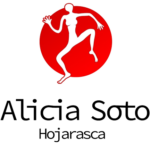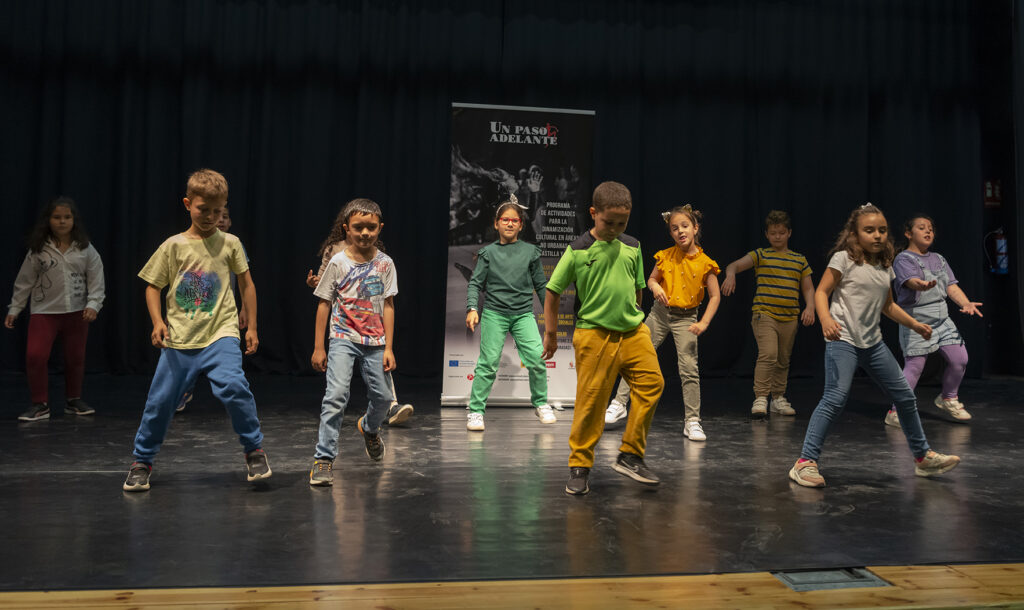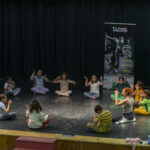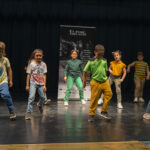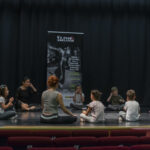Educational project for boys and girls
A movement, rhythm and imagination workshop to bring dance closer to childhood in order to create future spectators or dance students, emphasizing the pedagogical aspect. The union of dance and music helps children in their intellectual and physical growth, enhancing psychomotor skills and memory.
Dance is one of the most complete arts that exist, as an art it is based on sensitivity and imagination, but its development is nourished by a great physical form. For this reason it is a wide range full of nuances and has a large number of techniques, the development and study of which dates back to the beginning of the 20th century. Today some of these techniques or dance studies are used, naming them in different ways but which is actually dance: Psychomotricity, so fashionable today in early childhood education, is a part of dance. A large part of the games carried out in special education based on the discovery of space, of shapes are dance exercises, etc.
DANZARTE is an activity with a playful origin, but its practice goes much further than any other activity of a sporting nature, since many elements are combined: psychomotor skills, rhythm, sensitivity, creativity.
The child, that being so intelligent
Working and teaching children is quite a challenge and an exciting world where fear is the first thing that assails you, due to that difficulty that, a priori, one imposes on oneself wondering if one will be able to capture the child's attention and interest. In "Danzarte" we work with the idea that we too are children. Through play, something very serious, we have developed three concepts: rhythm, movement and imagination.
Three concepts so important in the intellectual and personal development of a child.
- Rhythm, so important in learning to read and write.
- Movement, so important to enhance disinhibition.
- Imagination, so important to create a life project and live with enthusiasm.
What we achieve with DANZARTE
Develop memory, enhance synchronization and coordination.
The movements that we work on are simple, very organic and always start from a natural movement of themselves, during the class we get them to lose their fear of jumping, falling and turning.
Uninhibited, move freely as a dynamic within the class.
Learning to know how to keep pace helps to learn to read.
Enhance the elasticity of muscles and bones, improving the growth of children.
Promote agility in children.
They lose the prejudice that dance is only for girls because they discover that you have to have strength to practice it.
How the activity develops
The sessions with the children last: 1 hour and 30 minutes with children of 1st and 2nd grade and 1 hour with children of 3 years, children.
Children should wear comfortable clothing that can get stained.
The classes are taught by a dancer and a musician and are divided into 3 parts.
Part 1 THE RHYTHM: The children are sitting on the floor, in a large circle and we teach them simple 8-count rhythms that they must all sing at the same time, taking time, which we will change as they learn it. On top of this rhythm we add silences or claps, we play games.
We discovered a large number of arrhythmic children with great difficulty keeping time.
2nd part THE MOVEMENT: From these 2 measures of 4 x 4, that is to say our 8 accounts, we add a movement for each account. Creating a small choreography of 16 accounts that the children must memorize and is performed on the floor. They are very simple and natural movements, which they include in their games.
They are fascinated by risk, which is why I include exercises with a physical difficulty and we get the most timid to lose their fear.
The musician accompanies them with a percussion instrument, first a beat for each beat and movement, then he will create music and the choreography is complicated standing up, with right and left exercises.
There are always many surprises.
DISINHIBITION the children begin to be tense and more excited because they have had to pay a lot of attention to carry out the two previous parts, we use all their energy; And we begin a new sequence of movements, this time the children must follow the teacher, the musician accompanies us, with his music he sets the rhythm.
The sequence of movements is executed covering the entire class, jumping, turning, falling to the ground, each time it will be faster and stronger.
Then we return to our choreography that they must repeat only with the musician. (We discovered lack of concentration, poor ability to retain and dyslexia)
Part 3 CREATIVITY, following the rhythm accompanied by the musician, the children will move freely following some guidelines:
First on the spot moving each time a part of the body, the head, the arms, the hips and so on until the whole body.
Second throughout the space freely like soap bubbles, like leaves on the trees, rolling like a stone etc.
To end the rhythm from less to more and more to less. The session ends lying on the floor with your eyes closed, listening to your breathing.
